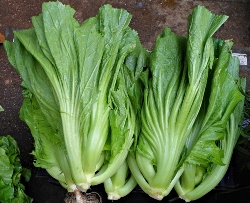 Brassica juncea (L.) is a species of mustard plant. Peppery, crispy mustard greens, also known as leaf mustards. In the Philippines, it was known as Mustasa. Mustard Greens are indeed one of the most nutritious green-leafy vegetables available around. Leaves eaten as green leafy vegetable, fresh or pickled in brine; also used in soups and stews. Its lovely top greens have actually more vitamin A, carotene, vitamin K, and flavonoid anti-oxidants than some of typical fruits and vegetables.
Brassica juncea (L.) is a species of mustard plant. Peppery, crispy mustard greens, also known as leaf mustards. In the Philippines, it was known as Mustasa. Mustard Greens are indeed one of the most nutritious green-leafy vegetables available around. Leaves eaten as green leafy vegetable, fresh or pickled in brine; also used in soups and stews. Its lovely top greens have actually more vitamin A, carotene, vitamin K, and flavonoid anti-oxidants than some of typical fruits and vegetables.
Mustard Greens (Mustasa) Production Guide:
Farm Practices
Mustard be grown in wide varieties of soil that ranges from light to heavy loamy soils. 1-2 ploughing and 2 harrowing should be given as part of field preparation. And 7- 10 tons of farmyard manure per hectare should be added as part of field preparation.
Planting Management
Mustard seed plants are normally grown from seed but can be grown from purchased seedlings as well. Plant the mustard seed about three weeks before your last frost date. Plant your mustard seeds about a 1 inch apart. Once they sprout, thin the seedlings so that they are 6 inches apart.
Seasonality
Mustards are cool season winter crop. Their tender, crispy leaves are more flavorful which last from November until March.
Harvesting
Harvesting should be carried out as soon as the pods begin to turn yellow and seed becomes hard. The mustard crop matures in about 110-140 days. Young tender green leaves, which used as green-leafy vegetables, are gathered when the plant reaches about 2 feet tall. If left alone, it continues to grow, reaches about 4-5 feet in height and bears golden yellow flowers which subsequently develop into mustard seed pods.
For more information, please visit or call:
Bureau of Plant Industry – Crop Research Production
692 San Andres Street Malate, Manila, Philippines
Phone: (02) 8525-7313 / (02) 8525-7857
Fax: (02) 8521-7650
E-mail: [email protected]
Source: www.bpi.da.gov.ph / Photo: en.wikipedia.org